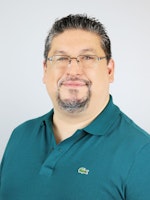Q: “Our facility has a set of loaner trays that require 10 minutes exposure at 270 ℉. We are currently running a full load of our general sets and pouches with these loaners at that extended cycle time. Is this acceptable?”
A:
My official answer is that you’ll need to check the Manufacturer’s (Mfr.’s) Instructions for Use (IFU) on each instrument, device, and set on that load to see if you are following them.
Extended cycle times in an autoclave are tricky, and there are numerous misconceptions about them. First, keep in mind why these extended cycle times exist. Mfrs. of reusable devices are required to submit reprocessing instructions to the U.S. Food and Drug Administration (FDA) that show their instrument/set/device can be safely reprocessed. This validation includes reprocessing steps that must be followed to ensure safe devices, and there is a tremendous amount of testing and lab results required to prove the effectiveness of the process (i.e., there is a reasonable assurance that effective cleaning and sterilization will result in the appropriate levels of microbial kill, typically 10–6, using methods currently available to users in the field). This is known as the Sterility Assurance Level (SAL).1
We need to ask ourselves, “Why would a manufacturer require 10 minutes of exposure time?” The answer is possibly because 4 minutes of exposure at 270 ℉ was not effective at sterilizing all parts/sections of that tray/device to achieve the required SAL of 10–6. If the Mfr.’s IFU states 10 minutes of exposure time, then make sure you are following that.
Now that we understand why extended cycle times exist, let’s dive into the meat of your question on running a full load of mixed instruments on that extended cycle.
A typical or standard device can usually achieve an effective SAL of 10–6 at 4 minutes of exposure at 270 ℉—assuming a) the device is tested for functionality; b) effective cleaning and packaging steps are followed; c) the sterilizer is functioning properly; d) any other considerations. (Note: Standard devices [devices that require 4 minutes of steam exposure at 270 ℉] may not be able to withstand contact at this high temperature of 270 ℉ for more than that prescribed time.)
Consider the pressure of the exposure phase of a steam cycle. In the sterilizer chamber, steam is forced inside the sterile packaging to make contact with all surfaces of instruments or devices (Fig. 1). The high pressure (combined with high temperature) may cause damage to instruments or devices (e.g., melting, cracking seals, etc.) or cause loss of functionality.
The Mfr. validates the exposure time provided in their IFU. For example, if their device is validated for 4 minutes, extended cycle exposure times (5, 6, 8, or 10+ minutes) were likely not tested, so there will be no instructions for safely reprocessing the device. Therefore, if you decide to do something different from the IFU, you may damage the device, and your facility will be held responsible for the results.
To go deeper, you’ll need to get the IFU for everything that you plan on putting in that extended cycle to see if it can be sterilized that way. When reviewing those IFUs, pay particular attention to the sterilization instructions (Fig. 2) and how they are worded. Unless the IFU says “. . . for a minimum of . . .” exposure time, then it’s very likely that they validated their instrument/device at a very specific time/temperature/exposure.
Consider the materials that make up each instrument/device. For example, single-piece, stainless-steel instruments are less likely to be damaged in an extended exposure period than a digital camera. Anything with complex parts, rubber seals, or electronic components is at a higher risk for damage. The sterilization container itself may have specific limits for exposure (i.e., time, temperature, pressure). Some containers are made of aluminum, plastic, polymers, etc., and they may not hold up or may break down faster under extended cycle conditions.
Ultimately, checking the IFU for every device and container on each extended cycle load that you run seems like a tremendous amount of work. My recommendation would be to separate out the loaner trays with the extended cycle instructions and run them by themselves. The inconvenience of running a smaller load (or with a half-full rack) is a small sacrifice when compared to the potential dangers and fallout from not following the Mfr.’s IFU.
References (APA Style 7th Edition):
-
U.S. Food and Drug Administration. (2019, July 15; last update 2024, December 23). Recognized Consensus Standards: Medical Devices. ISO/TS 19930:2017 [Guidance on aspects of a risk-based approach to assuring sterility of terminally sterilized, single-use health care product that is unable to withstand processing to achieve maximally a sterility assurance level of 10-6], Recognition No. 14-533. United States Dept of Health and Human Services (HHS)/FDA. https://www.accessdata.fda.gov/scripts/cdrh/cfdocs/cfStandards/detail.cfm?standard__identification_no=39534
-
Healthmark. (2022, January 18). Presenter: Stephen M. Kovach. What Happens Inside A Sterilizer? [Video]. YouTube. https://www.youtube.com/watch?v=q4Dn8z3-qok
-
Healthmark, A Getinge company. (2025, February). Support Document Library. https://www.hmark.com/support-module/

Adam Okada | Clinical Education Specialist, Healthmark, a Getinge company
Adam Okada has 18+ years of experience in Sterile Processing and is passionate about helping improve the quality of patient care by giving SPD professionals and their partners greater access to education and information. He has worked in just about every position in the Sterile Processing Department, including Case Cart Builder, SPD Tech I, II, and III, Lead Tech, Tracking System Analyst, Supervisor of both SPD and HLD, Manager, and now as an Educator. Adam is the owner of Sterile Education, the world’s first mobile application dedicated to sterile processing education, and a former Clinical Manager at Beyond Clean. He has published articles for HSPA’s Process magazine, is a co-chair on AAMI WG45 as well as co-project manager for the KiiP “Last 100 Yards” group, and is the former President for the Central California Chapter of HSPA. Adam is currently a Clinical Education Specialist at Healthmark, A Getinge company, where he works on Healthmark webinars, hybrid events, and educational videos, as well as the "Ask the Educator" Podcast with Kevin Anderson.

![Figure 1: Screenshot visual example of how pressure works inside a sterilizer. [Video]. Figure 1: Screenshot visual example of how pressure works inside a sterilizer. [Video].](https://img.hpnonline.com/files/base/ebm/hpn/image/2025/02/67c1ec7ce46d7bbf611207de-adam_1.png?auto=format,compress&fit=max&q=45&w=250&width=250)





